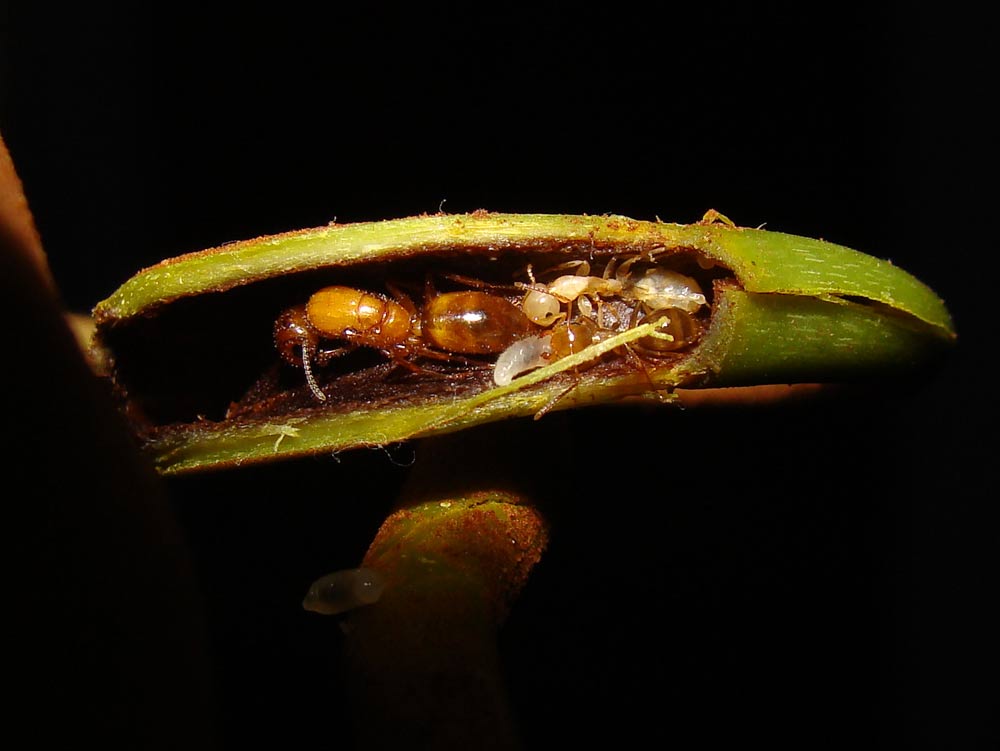Carnivorous Plants Employ Bodyguard Ants

Carnivorous plants can have valuable allies in ants, benefiting from their poop and janitor, bodyguard and cutthroat services, researchers say.
The carnivorous pitcher plant Nepenthes bicalcarata dwells in the nutrient-poor peat swamp forests of Borneo. It is not a very effective carnivore by itself — its pitcher-shaped leaves lack the slippery walls and viscous, elastic and strongly corrosive fluid that make those of its relatives such effective deathtraps.
However, N. bicalcarata does apparently have unusual support on its side — the ant Camponotus schmitzi. The carnivorous plant has swollen tendrils at the base of each pitcher that serve as homes for the insects, and a food source in the form of nectar secreted on the pitcher rims.
In return, the ants apparently provide a host of services for the pitcher plants. They clean the pitcher mouth to keep it slippery enough to help catch prey. They attack weevils that would otherwise munch on the plant. They cart off the remains of large prey from the pitchers that would otherwise rot. They lie in ambush under pitcher rims and systematically attack any of the plant's prey that attempt to escape the traps. And their droppings fertilize the plants. [Amazing Photos of Carnivorous Plants]
Still, while it seemed that both pitcher plants and ants benefited from this alliance, investigators lacked hard evidence. It could be the case that only the ants profited.
Now scientists have compared both ant-inhabited and uninhabited plants, finding those with ants fared much better than ones without.
"The symbiotic ants are shown to be crucial for the nutrition and survival of their host plant," said researcher Vincent Bazile, an ecologist at University Montpellier 2 in France.
Get the world’s most fascinating discoveries delivered straight to your inbox.
The carnivorous plants with ants produced more and larger leaves, and their adult foliage was also three times as rich in nitrogen, the nutrient that is key to organic molecules such as proteins and DNA. Plants with ants also had more and larger pitchers — likely in part because the ants kept away weevils that would have chewed on pitcher buds — and their pitchers held greater masses of prey. Nitrogen isotope analyses demonstrated that ant droppings fertilized the plants. Analysis of leaf pigment also revealed that without the ants, plants displayed symptoms of nutrient deprivation.
"This combination of carnivory and ant-plant mutualism is, in the plant kingdom, an outstanding and unique adaptation for the exploitation of nutrient-poor soils," researcher Laurence Gaume, an ecologist at University Montpellier 2 in France, told LiveScience, referring to soils in tropical environments where the plants live. "This may explain why Nepenthes bicalcarata displays exceptional life span and vegetative growth, reaching heights up to 20 meters (65 feet) into the forest canopy, a record for the genus."
The scientists detailed their findings online May 9 in the journal PLoS ONE.





